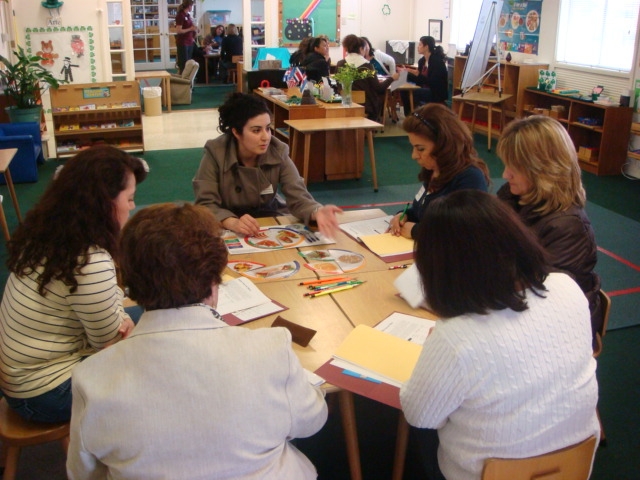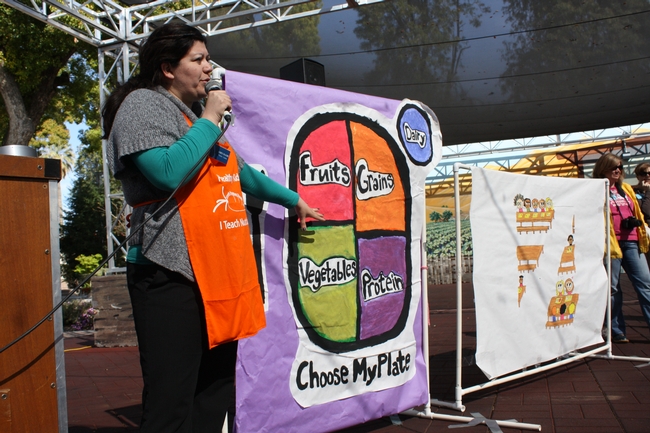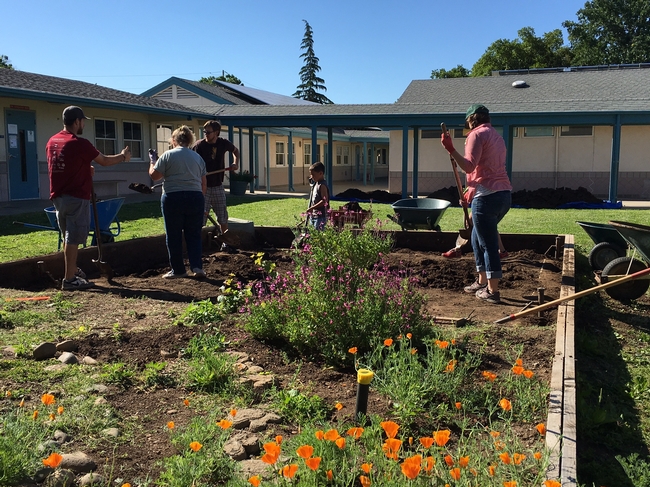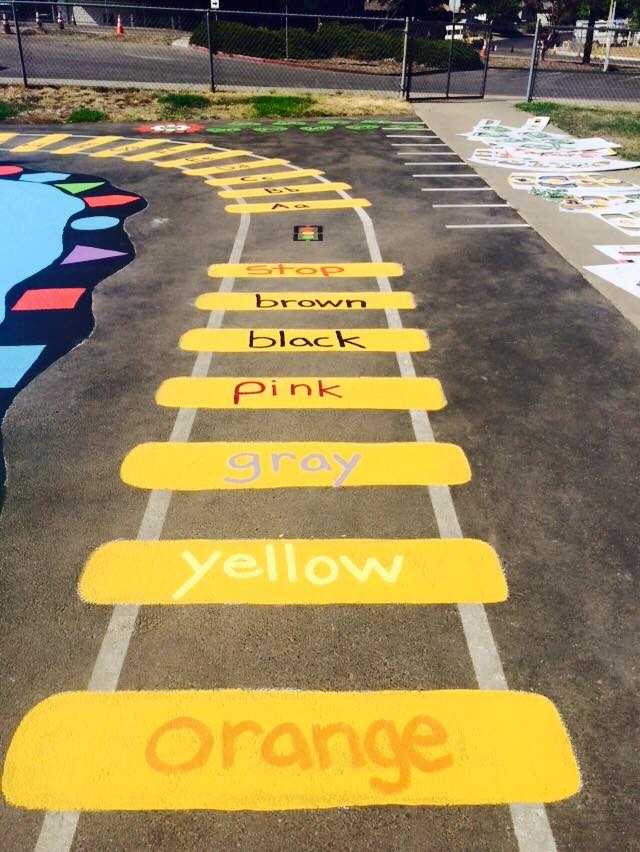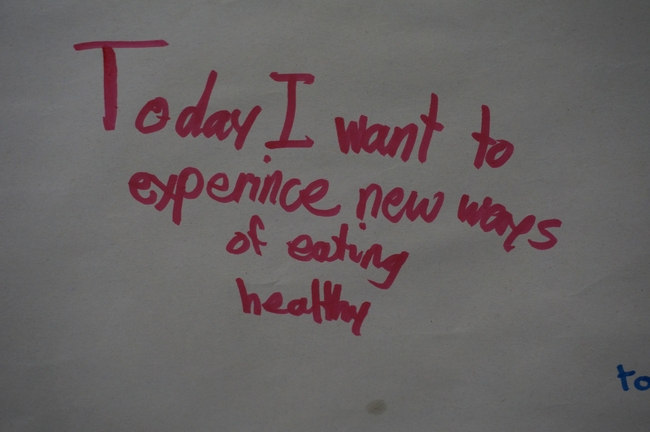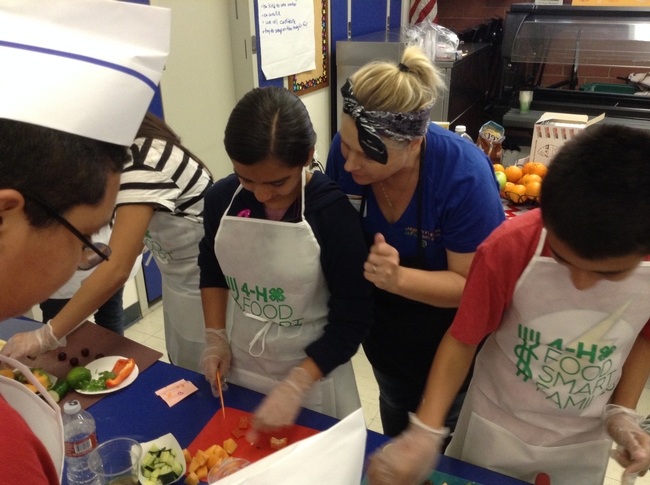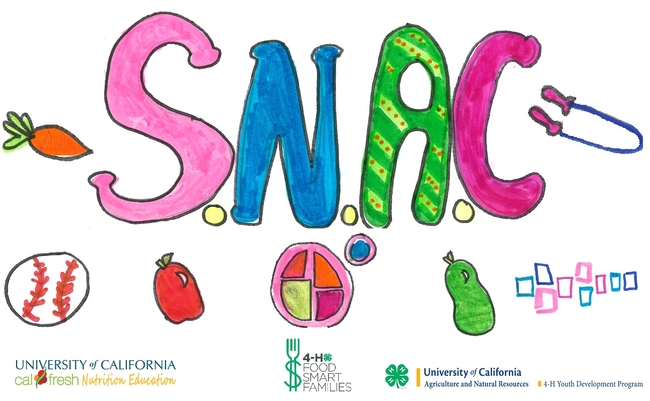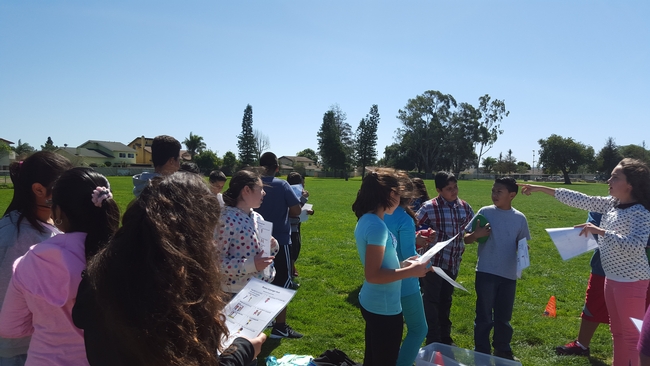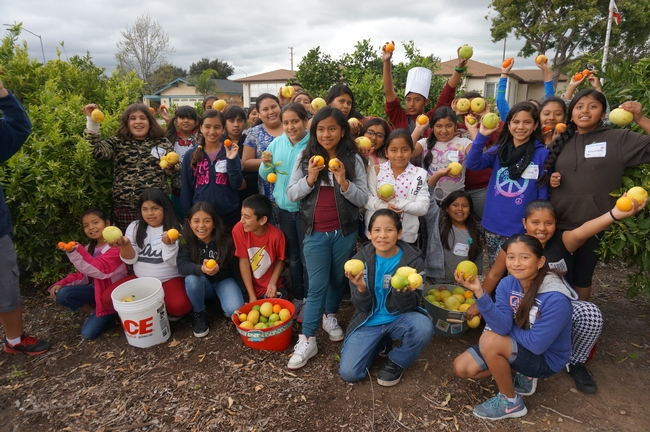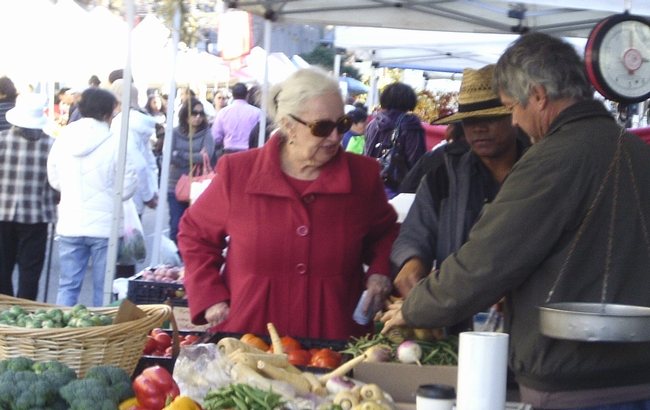Posts Tagged: UC CalFresh Nutrition Education Program
The power of listening: Working for positive change in SNAP-Ed communities
Change takes time. There are frequently obstacles. But when it occurs, it can be satisfying.
This year, over 1,000 participant quotes from adults in the UC CalFresh Nutrition Education Program chart a course for change. In the food eaten, beverages consumed, or daily exercises undertaken, participants describe a desire to take a new approach, or be more conscious of the little daily decisions that can make all the difference in health.
In 2015, UC CalFresh programs were delivered in 891 sites. The majority of sites were education-oriented, with 78 percent being either public schools, preschools, adult education, or Head Start programs.
“This class changed eating habits for my family and friends." - Eating Smart Being Active class, Fresno County
“This class was very informative and it gave me tips and ideas on how to stay healthy, how to be active with our children and also great recipes! I enjoyed the class and will use their tips and ideas when thinking about my diet.” - Eating Smart Being Active class, Fresno County
Many quotes express thanks for a program that offers evidence-based curricula to help improve food resource management – budgeting for healthy food while on the Supplemental Nutrition Assistance Program (SNAP - formerly food stamps) or offer recipes that are tasty on a limited budget. Some quotes reflect on what was learned, and how to continue making decisions that “stay the course” in healthy food selection and preparation. And then, there are those that thank dedicated educators, such as this one:
“My first time here at the nutrition class was April 21. All of the information taught by Julie was important and I learned about eating better, making simple quick healthy meals. My granddaughter walked into the class for the last 10 minutes. She tasted some of the meal and she said, 'Yum -- very good. Grandma can we take some home.' I told her we had the recipe and she asked to go buy the ingredients and make some at home because it was very good and she wanted to eat more. She helped me buy ingredients and helped me prepare the meal. She ate 2 bowls …She wants to try other healthy meals. Thank you for providing this nutrition program to share with us!” - Plan Shop Save and Cook class, Kings County
Occasionally, there are inspirational stories that touch our hearts and make us re-dedicate ourselves each day to our work:
“My son is a kindergartener. He is also autistic with many sensory issues! He only eats certain things (like chips, pop tarts, canned soup and raviolis). The UC CalFresh educator, Mrs. Carter, came in to do a nutrition taste test with the students today and, to my surprise, my son ate edamame willingly. He said it was awesome! For me, this is a big milestone! It could be the start of trying new foods! I love this program… It's great for all kids!” - Healthy Happy Me class, Placer County
Moving from individual education to policy, systems and environmental change agents
In the past few years, UC CalFresh has increasingly worked on developing programs that have policy, systems and environmental change approaches. However, the stories told by participants illustrate the importance of building our programs from a foundation of direct education.
In this effort, UC CalFresh uses a “school as the hub” model in communities. Schools are seen as pivotal arenas for nutrition education that can also influence broader policy, systems, and environmental change. Through classroom nutrition education with students, and after-school programs for their families, schools generate the potential to reach different age groups in the community effectively.
A school is a powerful environment for learning, growth and community engagement - from school gardens to work with food service directors creating nutritious meals and enhancing the cafeteria environment, to playground activities with stenciling and murals reflecting healthy choices. Opportunities abound to generate change in perspectives on food choices, physical activity, and healthy living.
Assisting communities to build capacity for sustainable change
As we work with communities to build capacity in the areas described above, over time, a transition has the opportunity to take effect whereby local leaders - principals, teachers, parents, grandparents and students - motivated by the desire to embrace long-lasting healthy changes in their family and community - act as role models and change agents. This fundamental shift moves institutional initiative and strategies into “community-based systems change.” And the seeds of this change began with a lesson, a child, a parent, an educator … a simple quote.
This story en español.
Inspiring youth leaders to cultivate health
What are sixth-graders interested in these days? “Cooking!” “Growing food!” “Learning how to be healthier.” “Exercising.” “Meeting new friends!” These enthusiastic answers came from sixth-grade student leaders in Santa Maria, Calif., when asked by educators from the UC Cooperative Extension Youth, Families and Communities program in San Luis Obispo and Santa Barbara counties.
Through an integrated youth-focused healthy living project, called Food Smart Families, funded by National 4-H, the UC ANR 4-H Youth Development Program, and the UC CalFresh Nutrition Education program, 32 fourth- through sixth-grade student leaders were brought together from three schools in Santa Maria, Calif., for a full-day educational retreat that focused on engaging youth to explore their healthy lifestyle interests and see themselves as leaders.
Throughout the day, student leaders experienced physical activity games, learned cooking skills, participated in garden-based learning, and developed their presentation skills. They focused on skill development, as well as transference so that the student leaders could take these activities into their own schools to encourage and teach their peers. For example, the fun physical activity breaks that were incorporated throughout the day modeled games where no one is “out” or excluded, while moving enough to get heart rates up.
After the retreat, the student leaders brought these activities to their own schools, leading their peers in the games during lunch and recess breaks. During the retreat, the student leaders also got to practice knife safety skills while chopping produce to prepare their own veggie pita pockets and fruit salads. With these skills, the student leaders offered food demonstrations and nutrition lessons to their peers during the following weeks.
In the garden, student leaders learned the basics of growing food and how to lead a garden lesson. Students discussed garden tools and how to use them safely, then planted their own seeds to take home. The garden session ended with a gleaning of the school citrus orchard where students laughed and enjoyed the fresh air and fresh fruits growing around them. In their own school gardens, the student leaders have offered lessons and tastings to their peers.
The retreat culminated with youth presentations. The student leaders worked in teams with students from different schools to generate ideas and artwork for the Student Nutrition Advisory Council (SNAC) logo and t-shirt design. They presented their concepts to the larger group, practicing their presentation skills. The student leaders voted on the designs and a winner was selected to be featured on a t-shirt for SNAC leaders at each of the three schools. The students leaders proudly wear their shirts as they lead healthy living education, advocacy and engagement activities.
By the end of the retreat, the student leaders were excited to take the information and skills back to their schools and start leading. Students shared their plans to help other students be more active during recess, be healthy, and help other kids be healthier too.
“This was the best day I have ever had,” said one of the students.
Since the retreat, the student-led initiatives have been numerous and continually evolving. The sixth-graders have encouraged and trained younger students to become their successors as they move onto junior high. Several students co-authored and starred in a video production called “Get to Know Your Salad Bar.” With educator encouragement, the student leaders developed a script to motivate their peers to try out the salad bar by mixing fruit into their salad to make it sweet or putting lettuce and tomato on your hamburger to make it juicy and crunchy. Beyond leading in their own schools, the student leaders have been working to help their entire community. Many of the student leaders helped organize and conduct game-style nutrition activities at a local food pantry distribution to teach families about shopping for healthy foods on a limited budget. Other student leaders provided education and training to students at neighboring schools, encouraging them to become leaders as well.
Through the efforts of the Food Smart Families program, the Youth, Families, & Communities program in San Luis Obispo & Santa Barbara counties merged the strengths of the UC CalFresh Nutrition Education program and the UC ANR 4-H Youth Development program to provide new opportunities and experiences for students in this community. With interested and caring adults, these student leaders learned to share their passions for cooking, gardening, and healthy lifestyle with their peers at school and others in their community. The rewards for the school, community and adult allies continue to expand as these inspired student leaders, with strong mentorship and support, take on some of the biggest challenges facing our society and world.
Community Produce Stand opens March 2 in East Oakland
To improve access to fresh produce for low-income seniors who live in a food desert in East Oakland, UC ANR Cooperative Extension in Alameda County, in partnership with Oakland Housing Authority and Mandela Market Place, will be opening a Community Produce Stand.
The Community Produce Stand will be open on the first Wednesday of every month, from 2 p.m. to 4 p.m., at 6401 Fenham Street in Oakland.
The produce stand will be located in the gazebo at Palo Vista Gardens, a low-income senior housing complex, and available to neighboring residents as well as people in two other Oakland Housing Authority sites, reaching more than 950 Oakland Housing Authority residents.
At the grand opening from 2 p.m. to 4 p.m. on Wednesday, March 2, a health fair will feature UC CalFresh representatives sharing healthy eating tips and recipes. La Clínica Dental, City Slicker Farms, Fresh Approach, Alameda County Community Food Bank and California Telephone Access Program will also participate and share resources.
The Community Produce Stand will accept CalFresh Electronic Benefit Transfer cards, said Tuline Baykal, UC CalFresh supervisor with UC Agriculture and Natural Resources in Alameda County. “Being able to buy fresh, affordable produce with EBT is important,” Baykal said, “because seniors and other residents may be tempted to opt for less healthy options to stretch their food dollars.”
Food deserts lack vendors that carry fresh fruit, vegetables and other healthful whole foods, and are usually found in poor parts of town. The supermarket closest to Palo Vista Gardens is 1.5 miles away. Between the housing site and the nearest store are half a dozen fast food restaurants and three liquor stores. Six convenience stores are in the vicinity, but they stock mostly processed, sugary and fat-laden foods.
“Low-income seniors often experience multiple barriers to healthful foods,” said Jaime Manalang, resident services coordinator with Oakland Housing Authority. “The lack of grocery stores and farmers' markets within close proximity to home, limited transportation options and their own physical mobility restrictions limit seniors' access to food, especially fresh fruits and vegetables.”
Healthful nutrition is critical for reducing the risk of disease and managing chronic health conditions, and is an important factor to living independently.


